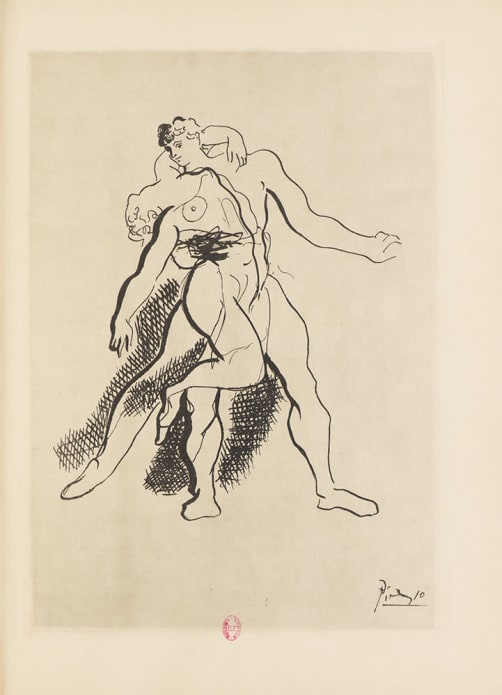Prices
Show / Event
Venue
Experience
No result. Clear filters or select a larger calendar range.
No show today.
I. The Ballets Russes Company
In March 1915, Jean Cocteau sought to meet Picasso. The young writer, who had been rubbing shoulders with the Ballets Russes since 1909, wanted to make his mark and establish himself as a creator with Serge Diaghilev, the company's director. As such, he wanted to meet the leader of the Cubist movement and persuade him to take part in one of his stage projects, Parade. At the beginning of the summer, the composer Edgar Varèse agreed to introduce Cocteau to Picasso - this first meeting marked the beginning of the artist's collaboration with the Ballets Russes.
From 1917 to 1925, Picasso regularly took part in company life, during residencies and tours, both in France and abroad. He embodied a kind of renewal within the Ballets Russes, alongside Cocteau and also Léonide Massine, principal choreographer at the time. During these years of collaboration, Picasso made many friends, as evidenced by portraits and caricatures, as well as a large body of correspondence. His heavy involvement in the world of ballet can also be explained by his encounter with Olga Khokhlova, who had danced for Diaghilev since 1911. Khokhlova became romantically involved with Picasso in 1917, before marrying him on 12 July 1918. She would be omnipresent in his work up until 1924.
In this context, ballet became a theme of Picasso’s work in its own right - the artist carried out numerous studies of danced movements and drew countless compositions of dancers, ballerinas and pas de deux.
The Ballets Russes Company
1/3
Immerse in the Paris Opera universe
Business Space
Back to top


![Pablo Picasso, Trois danseuses, [1919-1920]
crayon graphite sur trois feuilles de papier raboutées
Musée national Picasso-Paris
Dation Pablo Picasso, 1979](https://res.cloudinary.com/opera-national-de-paris/image/upload/h_695/f_auto/v1/user_photos/fxkzavaqxr3bntzxdftv?_a=E)













